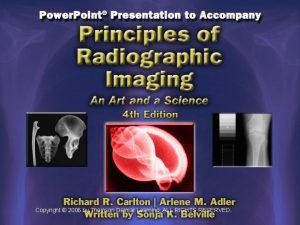Power Point Presentation to Accompany 2010 Delmar Cengage



















![Animation – Synovial Joints • [Insert synovial joints. swf] © 2010 Delmar, Cengage Learning Animation – Synovial Joints • [Insert synovial joints. swf] © 2010 Delmar, Cengage Learning](https://slidetodoc.com/presentation_image/40509eb5ba3725f32c65224a61e5910a/image-20.jpg)



- Slides: 23

Power. Point Presentation to Accompany © 2010 Delmar, Cengage Learning

Chapter 8 The Articular System © 2010 Delmar, Cengage Learning 2

Introduction • Articulation: union between two or more bones • Can be mobile or immobile • Examples – Sutures between skull bones – Knee or elbow joint © 2010 Delmar, Cengage Learning 3

The Classification of Joints: Structure and Function © 2010 Delmar, Cengage Learning 4

Introduction • Joints are classified into three major groups based on: – Degree of movement allowed (function) – Type of material holding bones together (structure) © 2010 Delmar, Cengage Learning 5

Synarthroses • No movement – Suture: bones connected by thin layer connective tissue (skull) – Syndesmosis: connected by ligaments between bones (radius and ulna) – Gomphosis: conical process in a socket (teeth) © 2010 Delmar, Cengage Learning 6

Amphiarthroses • Slight movement – Symphysis: connected by disk of fibrocartilage (pubic symphysis) – Synchondrosis: connected by hyaline cartilage (growth plate between diaphysis and epiphyses) © 2010 Delmar, Cengage Learning 7

Diarthroses or Synovial Joints • Free movement • Capsule with internal cavity • Capsule composition: fibrous cartilage, ligaments, tendons, muscle, synovial membranes • Functions: weight bearing and movement © 2010 Delmar, Cengage Learning 8

Diarthroses or Synovial Joints (cont’d. ) © 2010 Delmar, Cengage Learning 9

Movements at Synovial Joints © 2010 Delmar, Cengage Learning 10

Movements at Synovial Joints (cont’d. ) • Flexion/Extension – Hyperextension: abnormal extension • • Dorsiflexion/Plantar flexion Abduction/Adduction Rotation Circumduction © 2010 Delmar, Cengage Learning 11

Movements at Synovial Joints (cont’d. ) • • Supination/Pronation Eversion/Inversion Protraction/Retraction Opposition/Reposition © 2010 Delmar, Cengage Learning 12

The Six Types of Diarthroses or Synovial Joints © 2010 Delmar, Cengage Learning 13

The Six Types of Diarthroses or Synovial Joints (cont’d. ) • Ball-and-socket – Widest range of movement • Movement can occur in all planes and directions – Shoulder – Hip © 2010 Delmar, Cengage Learning 14

The Six Types of Diarthroses or Synovial Joints (cont’d. ) • Hinge – Convex surface fits into concave surface – Flexion and extension only – Knee – Elbow © 2010 Delmar, Cengage Learning 15

The Six Types of Diarthroses or Synovial Joints (cont’d. ) • Pivot – Rotation in one plane – Atlas and axis (cervical spine) – Rotation of the head © 2010 Delmar, Cengage Learning 16

The Six Types of Diarthroses or Synovial Joints (cont’d. ) • Condyloid (ellipsoidal) – Oval-shaped condyle fits into elliptical cavity – Motion in two planes at right angles – Radius and carpal bones © 2010 Delmar, Cengage Learning 17

The Six Types of Diarthroses or Synovial Joints (cont’d. ) • Saddle – Motion in two planes at right angles – Permits opposition of the thumb © 2010 Delmar, Cengage Learning 18

The Six Types of Diarthroses or Synovial Joints (cont’d. ) • Gliding – Gliding motion – Intervertebral joints in spine © 2010 Delmar, Cengage Learning 19
![Animation Synovial Joints Insert synovial joints swf 2010 Delmar Cengage Learning Animation – Synovial Joints • [Insert synovial joints. swf] © 2010 Delmar, Cengage Learning](https://slidetodoc.com/presentation_image/40509eb5ba3725f32c65224a61e5910a/image-20.jpg)
Animation – Synovial Joints • [Insert synovial joints. swf] © 2010 Delmar, Cengage Learning 20

Bursae © 2010 Delmar, Cengage Learning 21

Bursae (cont’d. ) • Closed sacs prevent friction between tissues – Synovial membrane lining – Subcutaneous: between skin and underlying bony processes – Subfascial: between overlying muscles – Subtendinous: between overlying tendons or bony projections © 2010 Delmar, Cengage Learning 22

Summary • Discussed the three types of joints (synarthroses, amphiarthroses, and diarthroses or synovial joints) • Described the movements possible at synovial joints • Named the six types of synovial joints • Discussed the functions and types of bursae © 2010 Delmar, Cengage Learning 23
 Chapter 6:2 interpreting word parts
Chapter 6:2 interpreting word parts 2009 delmar cengage learning
2009 delmar cengage learning 1/52 medical terminology
1/52 medical terminology 2009 delmar cengage learning
2009 delmar cengage learning 2009 delmar cengage learning
2009 delmar cengage learning Chapter 13 medical math assignment sheet cengage learning
Chapter 13 medical math assignment sheet cengage learning 2009 delmar cengage learning
2009 delmar cengage learning Delmar cengage learning instructor resources
Delmar cengage learning instructor resources 2010 cengage learning
2010 cengage learning Things that accompany salvation
Things that accompany salvation Accompany chapter 1
Accompany chapter 1 Rotter's node
Rotter's node Inkjet printers are considered legacy technology
Inkjet printers are considered legacy technology Microsoft power point 2010
Microsoft power point 2010 Presentation topics for students in hindi
Presentation topics for students in hindi Power point presentation design west vancouver
Power point presentation design west vancouver Delmar isotonic
Delmar isotonic Delmar tsi
Delmar tsi Delmar international (thailand) co. ltd
Delmar international (thailand) co. ltd Delmar thomson learning
Delmar thomson learning Delmar larsen
Delmar larsen Power triangle diagram
Power triangle diagram Power bi power point
Power bi power point Point point power
Point point power












































